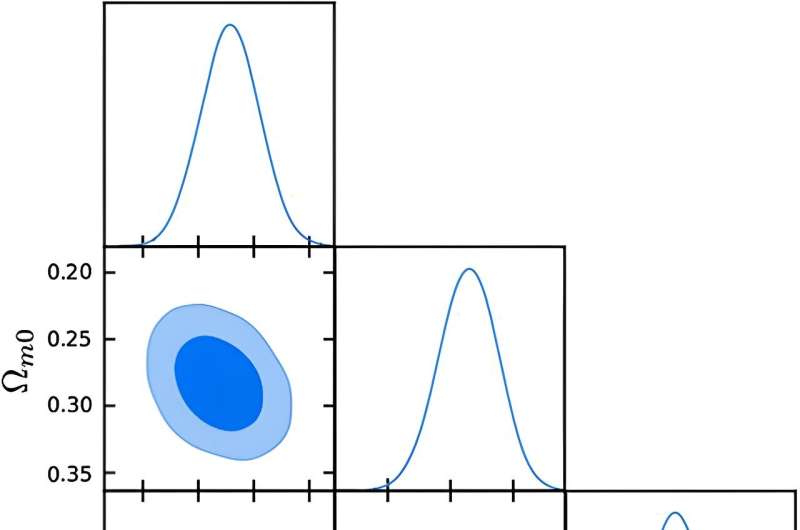This article has been reviewed according to Science X's editorial process and policies. Editors have highlighted the following attributes while ensuring the content's credibility:
fact-checked
proofread
Astrophysicist proposes a new theory of gravity without a conservation law

The general theory of relativity is based on the concept of curved space–time. To describe how the energy and momentum of fields are distributed in space–time, as well as how they interact with the gravitational field, a special mathematical construct is used—the energy–momentum tensor. This is a kind of analog of energy and momentum in ordinary mechanics.
In general relativity, the energy–momentum tensor is considered to be unchanged, or conserved. Just as, for example, in ordinary mechanics, the law of conservation of energy is fulfilled. However, this assumption is not always justified. For example, at sufficiently high energies the so-called non-renormalizability problem arises. Technically, this means that mathematical flaws appear that cannot be eliminated.
A RUDN astrophysicist has built a new theory of gravity, in which the "law of conservation" of the energy–momentum tensor is not required. The study is published in The European Physical Journal C.
"The problem of non-renormalizability of Einstein's gravity is well known. It has led to dozens of attempts to treat it as a low-energy theory. For example, in string theory, Einstein's classical equation is just the first term in an infinite series of gravitational corrections. So it is possible that at high energy and/or within the event horizon of black holes, spacetime curvature and gravity deviate from Einstein's general theory of relativity.
"This can be explained in different ways. However, in any case, the law of conservation of energy-momentum can be violated at high energy levels," Hamidreza Fazlollahi, a graduate student at the Educational and Scientific Institute of Gravity and Cosmology of RUDN University said.
Fazlollahi has built a new gravitational model. He started from the so-called Gibbs–Duhem relation. This is an equation that shows how the indicators of its components change in a thermodynamic system. After the transformations, we have an equation that resembles the classical Einstein equation in form, but with different factors and constants. The field equations were supplemented with two terms. One describes temperature–entropy, and the second describes charge and interaction.
The astrophysicist showed that the new gravitational model is consistent for different environments and can be used in astrophysical and astronomical research. As an example, the author tested the new theory by calculating two stages of the development of the universe—inflationary and accelerating expansion. The new theory's indications are consistent with experimental observations.
"For an example application, we studied spherically symmetric solutions and the evolution of the universe at early and late times. The model did not give any discrepancies regarding Einstein's gravity for vacuum," said Fazlollahi.
More information: H. R. Fazlollahi, Non-conserved modified gravity theory, The European Physical Journal C (2023). DOI: 10.1140/epjc/s10052-023-12003-x
Provided by Scientific Project Lomonosov





















